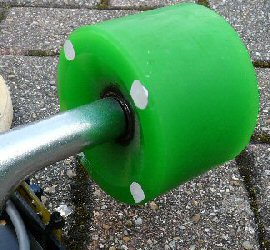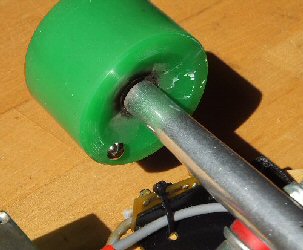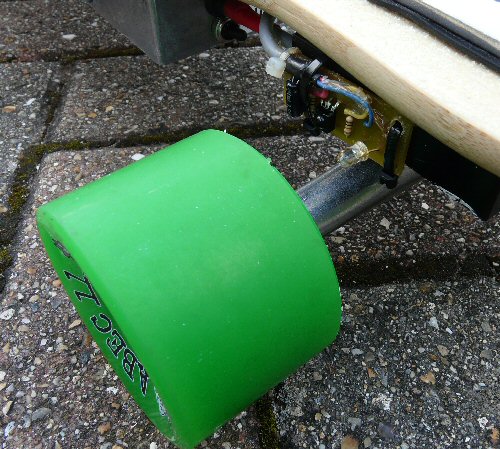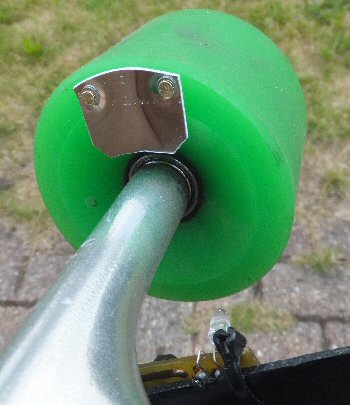Skateboard speedometer MK3
(for longboards)
Jonathan Hare, The Creative Science Centre, Sussex University
Please also see the main article for more details Longboard Speedo 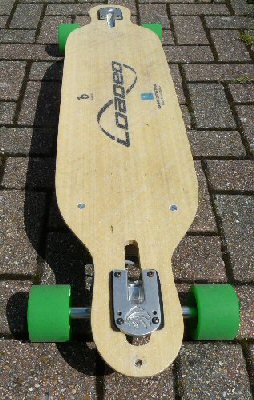
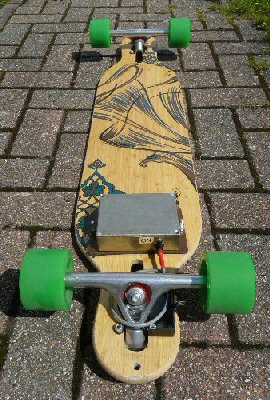
The MK3 speedometer - its not visible from the top but you can see the electronics case under the board.
